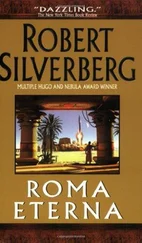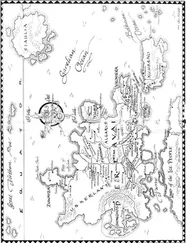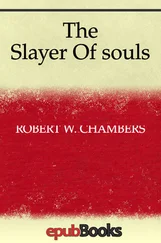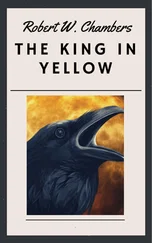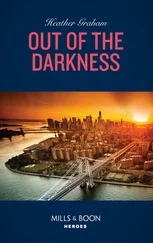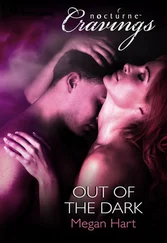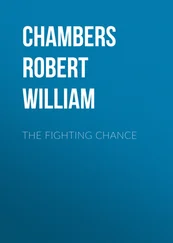While Chambers borrowed various things from Ambrose Bierce to embellish The King in Yellow , like the names Carcosa and Hastur, he has inspired precious few imitators himself. There may be one: Sidney Levett-Yeats, the British writer, introduces a book written by the devil (in his story ‘The Devil’s Manuscript’ (1899)) which ruins lives when read. It is titled The Yellow Dragon .
As The King in Yellow proved to be a winner, Chambers turned to writing full-time, while still keeping up his artistic habits (though, oddly, he never seems to have illustrated any of his own books, Charles Dana Gibson certainly illustrated some for him). He supplied illustrations for magazines such as Life, Truth , and Vogue , and was photographed for The King in Yellow , palette in hand.
He married Elsa Vaughn Moller in 1898, and they spent their married life at Broadalbin, an 800 acre estate in the Sacandaga Valley, northern New York State. Broadalbin had been in the Chambers family since his grandfather William Chambers first settled there in the mid-1800s. This beautiful country estate in the Adirondacks included a game preserve (where it seems Chambers never shot) and a fishing lake.
Broadalbin House was remodelled by Chambers’s architect brother, William Boughton Chambers, and was crammed with the family’s and Chambers’s collection of books, paintings, and Oriental objets d’art. His collection of butterflies was said to be one of the most complete in America.
Chambers spent most of the year at Broadalbin, travelling into New York to work in an office which he kept secret from his family (so much so that they had trouble finding it when he died). His chauffeur would drop him off and pick him up again at a spot some distance from the office.
Chambers lavished much care and affection on Broadalbin, planting thousands of trees on the estate. When he died, he was buried under one of the oaks.
Not all his time at Broadalbin was contented. He saw 200 acres of the estate vanish under the waters of the Sacandaga Reservoir which now covers much of the valley. He would have been even more desolate at the fate of his carefully planted trees (see Part Two).
Though part of the house at Broadalbin was demolished, the building still stands, now owned by the Catholic Church. It was abandoned (literally overnight, on the death of Chambers’s widow in 1938) for some years, and was vandalised terribly. It is reported that Chambers’s papers were used by intruders and squatters to light fires.
Chambers loved the outdoor life: it shows up in his writing time and again, where his descriptions of nature, scenery and forests are superbly evocative. A keen hunter, shooter and fisher, his characters are so often engaged in these pursuits as to suggest Chambers himself at play. He could apparently call most kinds of birds and was well versed in Indian languages (see ‘The Key to Grief’).
He must have been the most fortunate of authors: successful, rich and surrounded by the life he loved and wrote about. It is easy to see why he was reported to be so popular with his estate workers and neighbours in this period of his life.
To follow up the success of The King in Yellow , Chambers published another book of short stories in 1896, The Maker of Moons .
The title story, included here, is in many ways a practice run at his 1920 novel The Slayer of Souls . As in that book, we have ample helpings of the American secret service (fine men all), Oriental magic, and strange goings-on in the forest. It also shows how Chambers would finally drift away from the fantasy genre, into the world of espionage and adventure. ‘The Maker of Moons’ is nonetheless a superb fantasy, quite unlike anything else around at the time, and holds up well, even now.
From the same book comes ‘A Pleasant Evening’, another indication of the way Chambers would develop. Here, in a fairly traditional theme, he shows the skill that would lead to The Tree of Heaven (in Part Two) – the writing of neat and well crafted supernatural tales, not necessarily meant to frighten.
The next year, Chambers published The Mystery of Choice , a fine set of stories which was a series of vaguely connected tales, set mainly in France, but this time not in Paris. By far and away the most powerful of them was ‘The Messenger’.
This is a long, sometimes rambling story that nevertheless guides the reader along to a most eerie conclusion. The setting – coastal Brittany – has seldom been used to such effect, and the historical tale behind the story’s events has a grotesque ring of truth. This is one of Chambers’s best stories, and its use of the traditional masked figure has never been bettered.
‘Passeur’ from the same book, is a much shorter, traditional ghost story, easily guessed by anyone familiar with the genre. But Chambers is too good to give it all away completely; relish the scenery he depicts in the closing paragraphs.
Sticking out like a sore thumb from the rest of the stories in the book, ‘The Key to Grief’ is set far away from France. Chambers might have borrowed the odd name or two from Bierce for The King in Yellow ; here he all but ransacked Bierce’s living-room. This is a shameless reworking of Bierce’s ‘An Occurrence at Owl Creek Bridge’, which still has its own sense of the unknown, and is included here by virtue of its unusual location.
The Mystery of Choice contained a lot of what was to become the cardinal vice of Chambers’s writing as time went by: an awful tendency to be rather soppy, especially in his romantic scenes. This style probably didn’t read too well in the 1890s; nowadays it just grates alarmingly.
After 1900 Chambers moved steadily away from his roots in the fantasy genre, but still – though not often enough – popping back from time to time, as will be seen in Part Two.
Hugh Lamb
Sutton, Surrey
January 2018
‘Let the red dawn surmise
What we shall do,
When this blue starlight dies
And all is through.’
There are so many things which are impossible to explain! Why should certain chords in music make me think of the brown and golden tints of autumn foliage? Why should the Mass of Sainte Cécile send my thoughts wandering among caverns whose walls blaze with ragged masses of virgin silver? What was it in the roar and turmoil of Broadway at six o’clock that flashed before my eyes the picture of a still Breton forest where sunlight filtered through spring foliage and Sylvia bent, half curiously, half tenderly, over a small green lizard, murmuring: ‘To think that this also is a little ward of God’?
When I first saw the watchman his back was toward me. I looked at him indifferently until he went into the church. I paid no more attention to him than I had to any other man who lounged through Washington Square that morning, and when I shut my window and turned back into my studio I had forgotten him. Late in the afternoon, the day being warm, I raised the window again and leaned out to get a sniff of air. A man was standing in the courtyard of the church, and I noticed him again with as little interest as I had that morning. I looked across the square to where the fountain was playing and then, with my mind filled with vague impressions of trees, asphalt drives, and the moving groups of nursemaids and holiday-makers, I started to walk back to my easel. As I turned, my listless glance included the man below in the churchyard. His face was toward me now, and with a perfectly involuntary movement I bent to see it. At the same moment he raised his head and looked at me. Instantly I thought of a coffin-worm. Whatever it was about the man that repelled me I did not know, but the impression of a plump white grave-worm was so intense and nauseating that I must have shown it in my expression, for he turned his puffy face away with a movement which made me think of a disturbed grub in a chestnut.
Читать дальше

